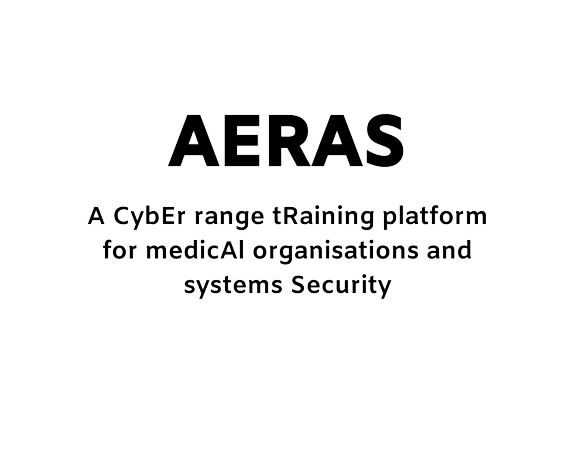Partensor
Parallel Algorithms for Very Large Tensor Processing
- Funded by: National funds
- Project Acronym: Partensor
- Funded under: General Secretariat of Research and Innovation (GSRI) – RESEARCH-CREATE-INNOVATE
- Budget: € (Overall: €)
- Start Date: 28th June 2018
- Duration: 36 months
- Website(s): www
More Info
TENSORS
Tensors are mathematical objects that have recently gained great popularity due to their ability to model multiway data dependencies. Tensor factorization into latent factors is very important for numerous tasks, such as feature selection, dimensionality reduction, compression, data visualization and interpretation. The problem of tensor completion, where we are called upon to “predict” the missing values of tensors, is extremely important in applications such as recommendation systems. In recent years, several software packages (n-way Toolbox, Tensorlab, Tensor Toolbox) have been developed for tensor processing, which highlights their growing importance. In many important applications, the tensors we are called upon to handle have billions of data, which makes it extremely difficult to process them on conventional computers. The available software packages are mainly serial implementations based on MATLAB, so the are not suitable for processing very large tensors. We estimate that the only viable way to process very large tensors is through parallel supercomputers.
FMRI
Functional magnetic resonance imaging (fMRI) is one of the most popular methods in the study of the human brain. It is a technique that uses magnetic resonance imaging (MRI) to access brain activity by detecting local changes in blood oxygen levels.
FMRI is used both for brain function research and as a diagnostic tool. Through fMRI, it is possible to study the neural networks formed in the human brain in order to perform brain functions at the level of topology and structure. Conclusions on brain function, such as the structure and morphology of neural networks, are achieved by examining multiple healthy subjects that perform common activities. The use of fMRI as a diagnostic tool has been suggested for many diseases through a large number of tasks. Any deviations and alterations in the characteristics of neural networks can be detected in a timely manner, even at a pre-symptomatic stage, resulting in early detection of neurodegenerative diseases (Alzeimer’s disease, Parkinson’s disease, etc.) or mental disorders (schizophrenia, bipolar disorder, etc.).
Analysis of fMRI data is particularly complex, mainly due to two factors. The first factor is associated with the need for high spatial and temporal clarity, which leads to the creation of large volume data. The second factor concerns the nature of the data. The fMRI signal is not directly related to neuronal activity but to the changes in oxygen levels observed locally and associated with the metabolic requirements of neurons (associated and unrelated to a particular brain function). In addition, the fMRI signal is weak and overlaps by many noise sources associated with the signal acquisition process. Therefore, the processing of fMRI is composed by the removal of the noise (pre-processing), as well as the components unrelated to the intended brain function, as well as the extraction of information about the neural function.
The fMRI signal processing methods, after the pre-processing step, fall into two categories. Univariate analysis methods, based on the analysis of the signal generated by each brain area separately (voxel-wise signal analysis), appear in the first category. In the second category, there are multivariate analysis methods that analyze the signals that arise from each area of the brain and aim to draw conclusions on how a brain function is performed in a human brain (finding neural networks associated with a brain function and temporal behavior of these).
A new trend in the multivariate analysis methods is the use of tensor models (PARAFAC and TUCKER). In contrast to the most popular methods for analyzing multiple variables (PCA, ICA, etc.), the use of tensor models allows data analysis to maintain its multidimensional structure and offers unique data decompositions (PARAFAC model) to components, each expressed by a set of one-dimensional signatures, making it easier to interpret the results. When the data are not characterized by the PARAFAC model’s linear structure, degeneration phenomena occur during the decomposition process, resulting in the extraction of components that are highly concordant and are useless to interpret information.
The fMRI data do not follow the multilinear structure of the PARAFAC model, as the signals corresponding to adjacent regions exhibit delayed correlation phenomena due to the hemodynamic phenomena that develop in the interior of the brain. In order to enable the processing of fMRI data, variants of the PARAFAC model have been proposed in the literature, where delays between signals originating from adjacent regions of the brain have been predicted. In particular, models have been porposed that incorporate the unique delays for each voxel per component (Shift Invariant PARAFAC), as well as the existence of a parameterizable array of delays for each voxel per component (Convolutive PARAFAC). However, the decomposition process for both models is particularly time consuming and no parallel disintegration pattern has been proposed, as is a method of estimating the appropriate number of components.
Goal of PARTENSOR is twofold:
- Development of a Parallel Toolbox for processing very large tensors. Recently, a significant research activity has been developed at the Tenchnical University of Crete in the area of Tensor Factorization (TF). This activity has led to 1) publications at leading scientific conferences and journals and 2) parallel implementations through C++ and Message Passing Interface (MPI), using TF algorithms in distributed memory systems. In addition to TF, the toolbox will include a list of factorization and completion algorithms, such as Tucker, INDSCAL, PARAFAC2, depending on the nature of the data. Furthermore, it will be possible to impose structure on latent factors, such as sparsity, symmetry, orthogonality, etc.
To maximize the applicability of the toolbox to multi-processor systems of various kinds (distributed or shared memory, CPU-GPU combination, etc.), we will develop implementations of the algorithms in MPI, OpenMP, and OpenCL. - Development of parallel tensor algorithms for fMRI processing. Functional Magnetic Resonance Imaging (fMRI) is the most modern and popular method of mapping the human brain with important applications in clinical practice (neurology and neurosurgery). Analysis of fMRI data is extremely demanding due to the combination of large volumes of data and low signal-to-noise ratio. The use of tensor models for fMRI data analysis has attracted considerable research interest recently because it retains its multidimensional structure. However, in general, classical tensor models are not fully compatible with fMRI data. Our goal is to construct tensor models suitable for modeling fMRI data, and to develop parallel algorithms for tensor factorization or completion.
Within PARTENSOR, an assessment of the validity of the models to be developed in real data from a sufficient number of activation tests (motor and mental) and individuals is provided, as compared to existing, standard processes for the analysis and export of activation maps.
Publications
link to project’s site: https://www.partensor.com/en/publications-and-media
- Telecommunication Systems Institute – Greece
- NEUROCOM SA – Greece
- University of Crete – Greece

Other Projects

AI4RecNets

Green.Dat.AI

SecOPERA

EMERALDS

EDGELESS

SUN

CLIMOS
Cost-Benefit and Climate-Policy Measures

ORAMA
Platoons

SENTINEL

OPTIMA

EnerMAN

ELAION

AERAS

IntellIoT

Cyrene
RELATED LINKS
ADDRESS
Telecommunication Systems Research Institute (T.S.I.)
Technical University of Crete
Campus – Akrotiri
73100 Chania
Greece

